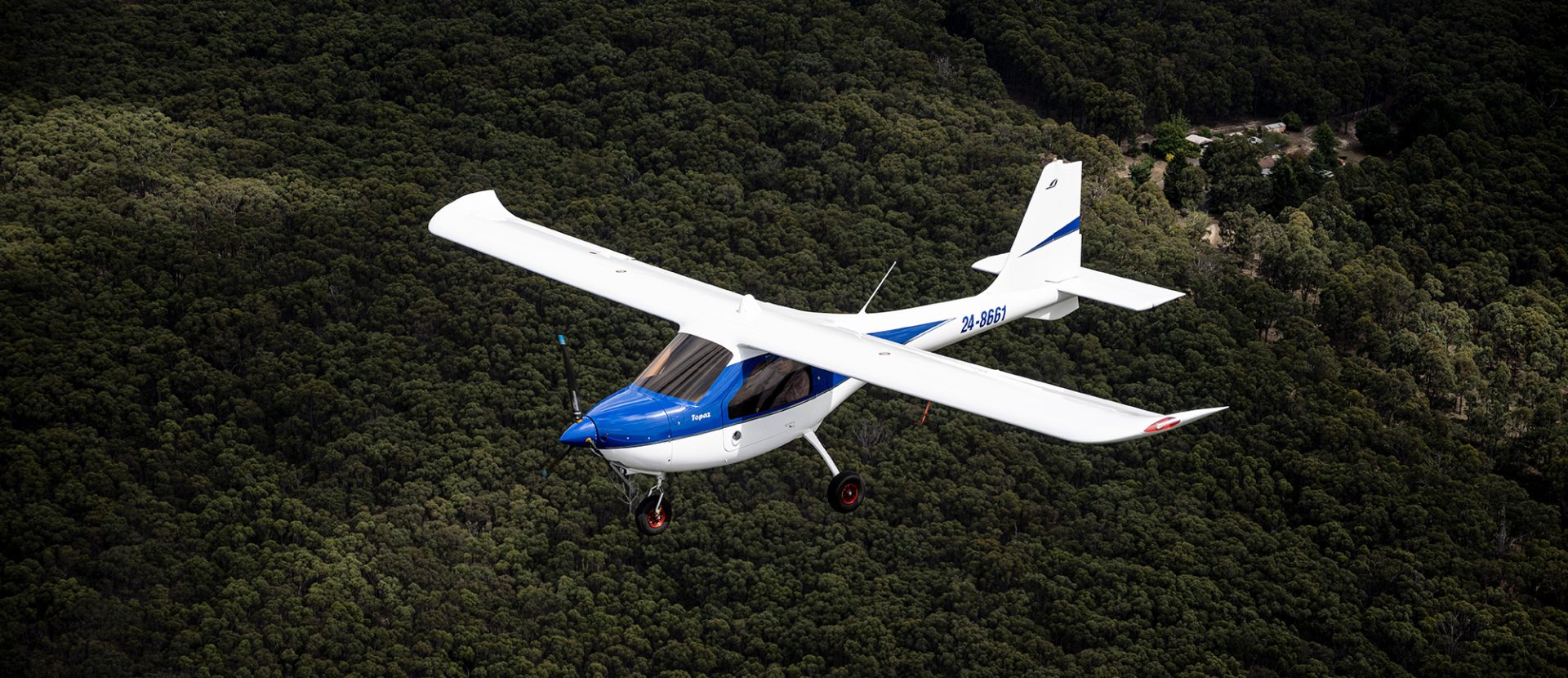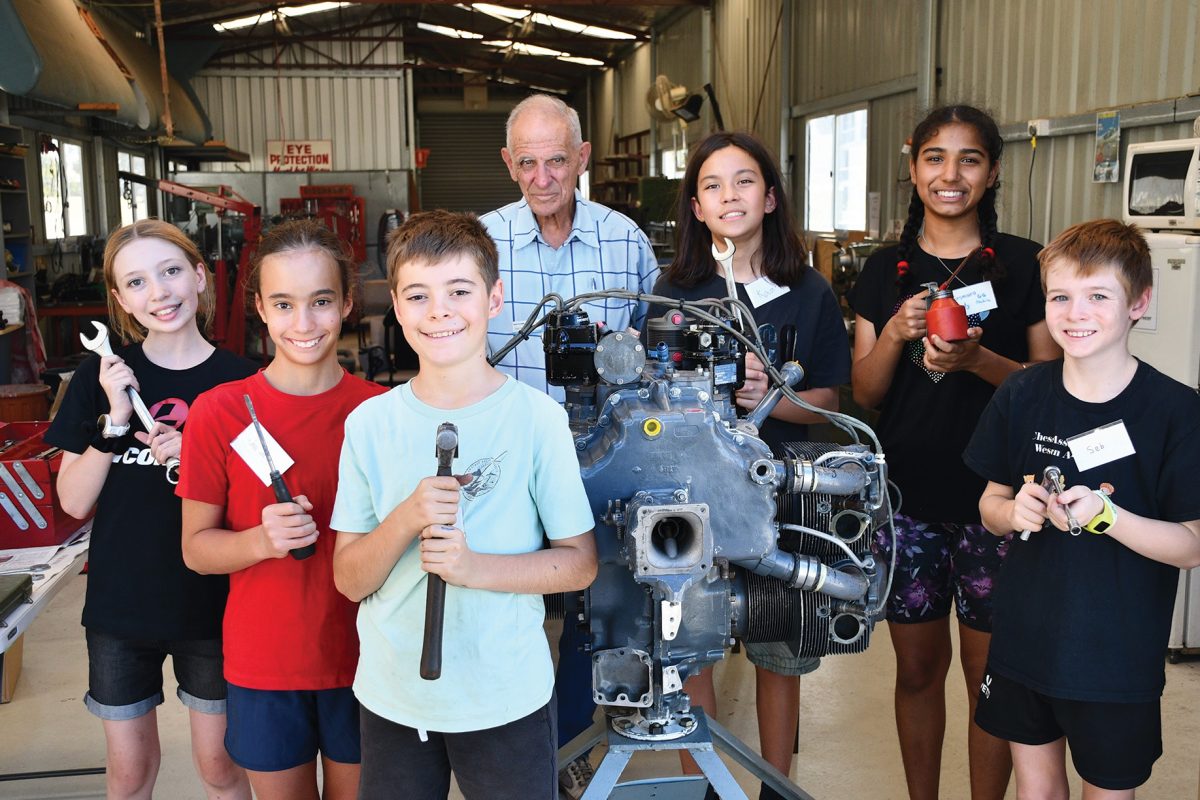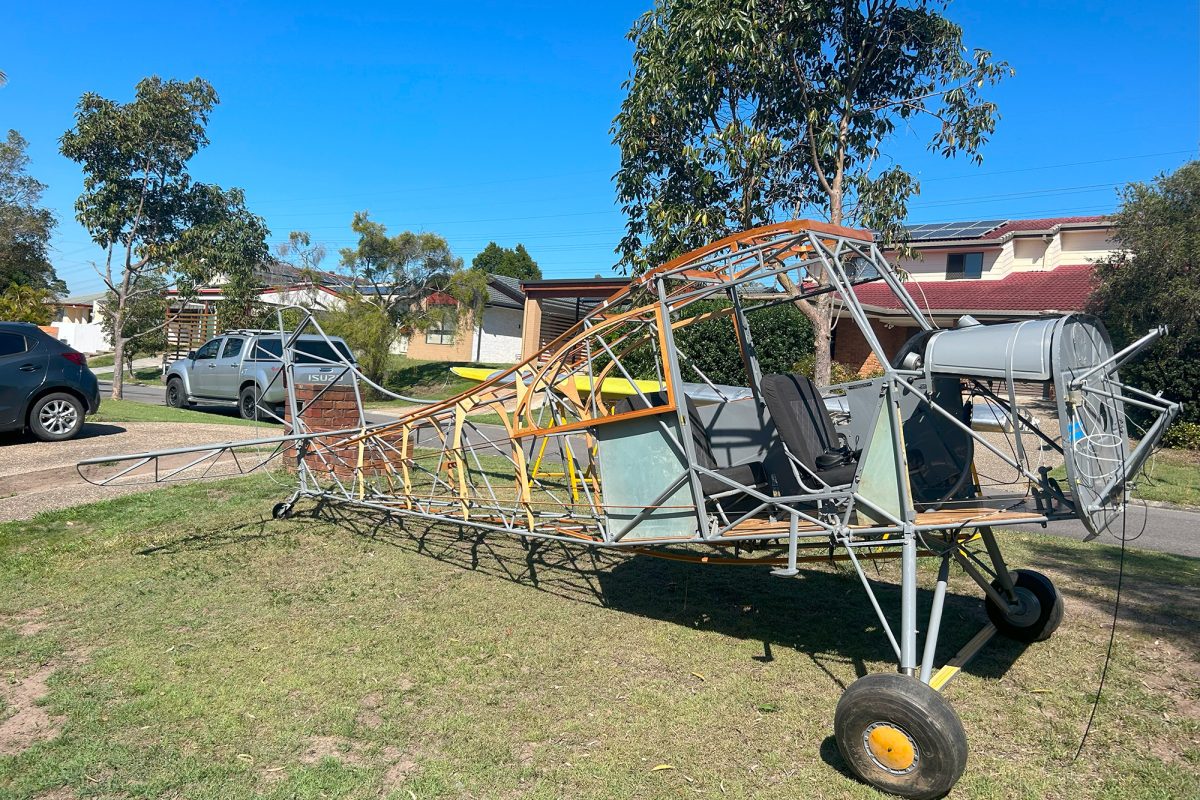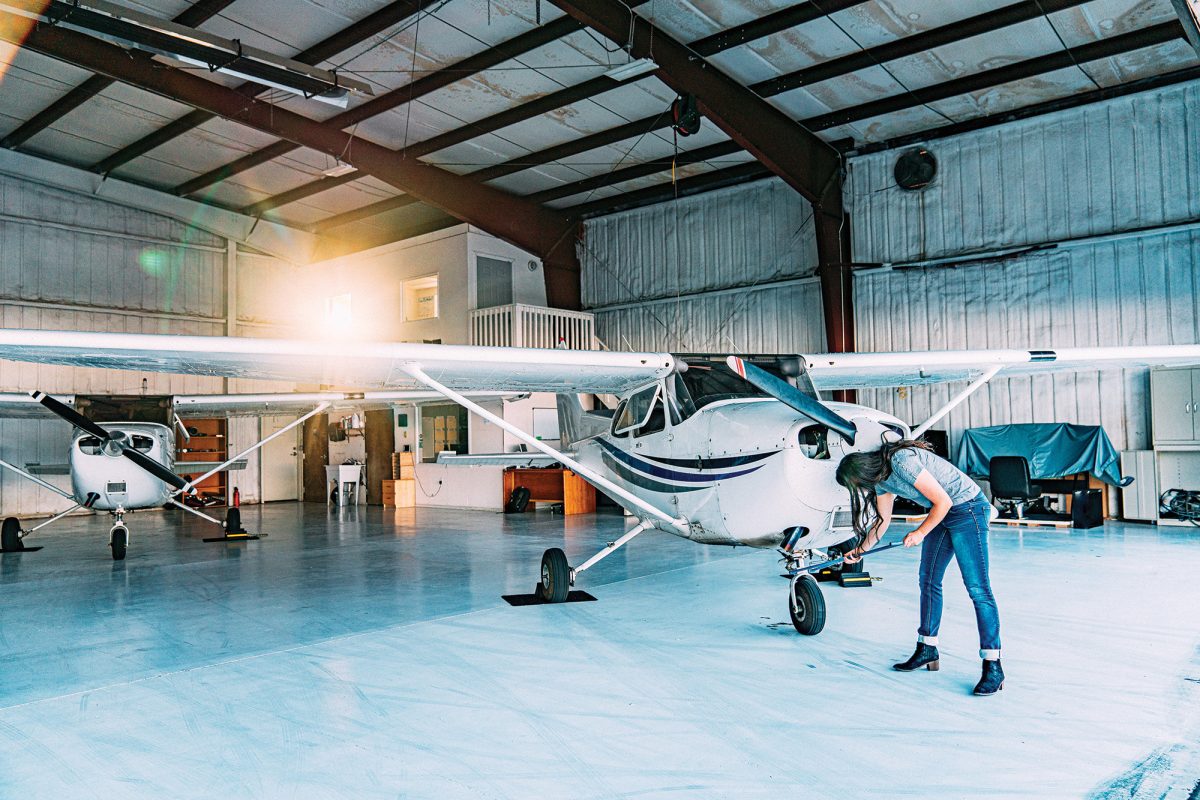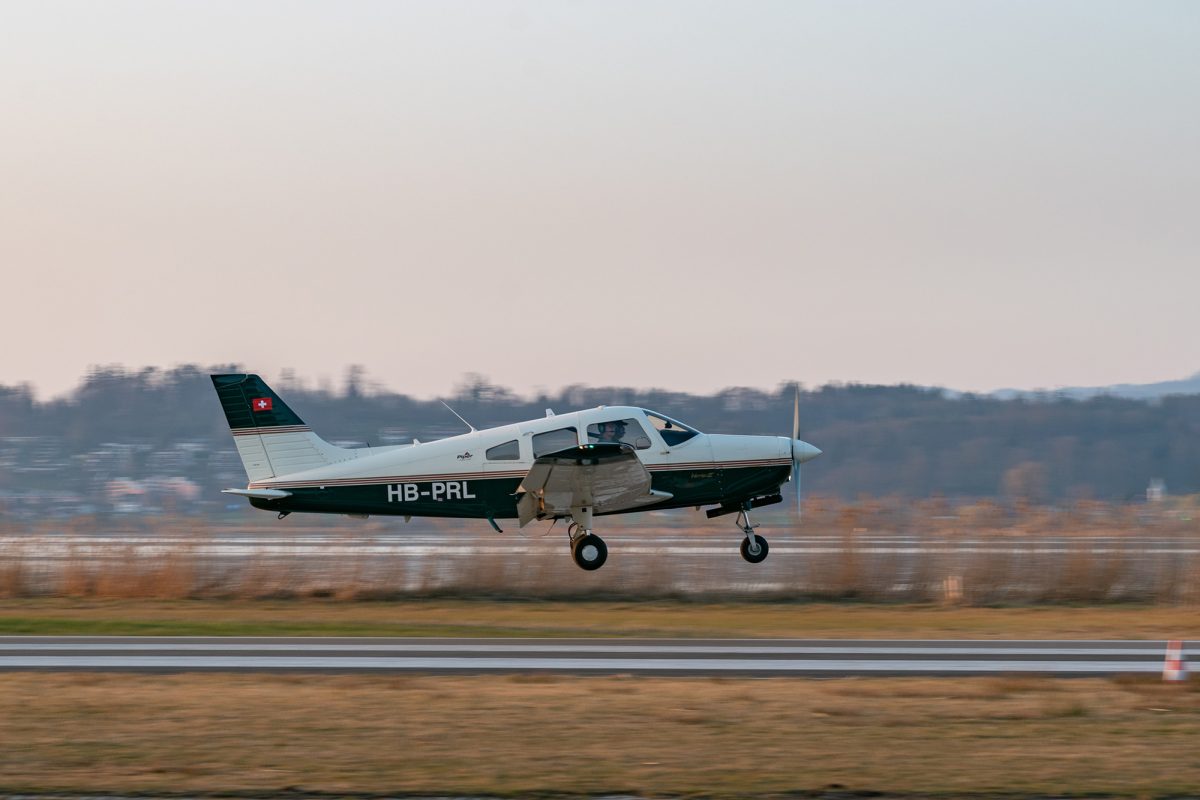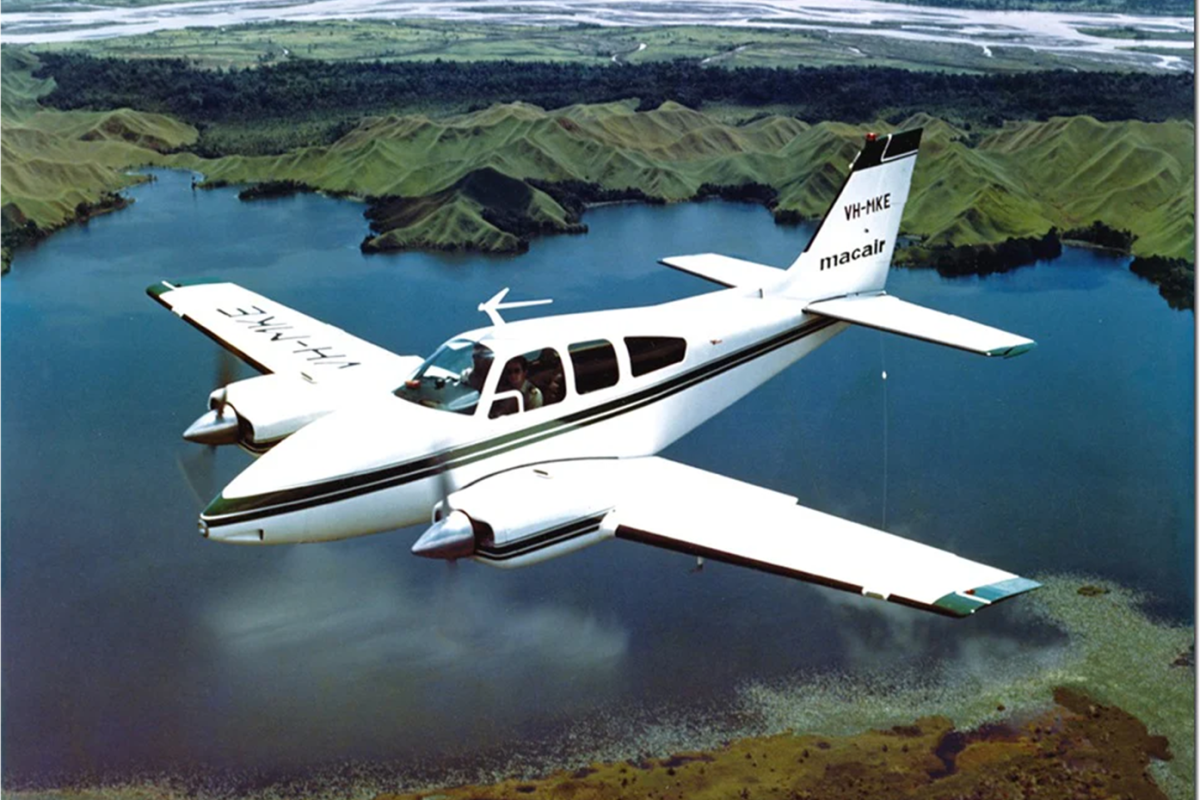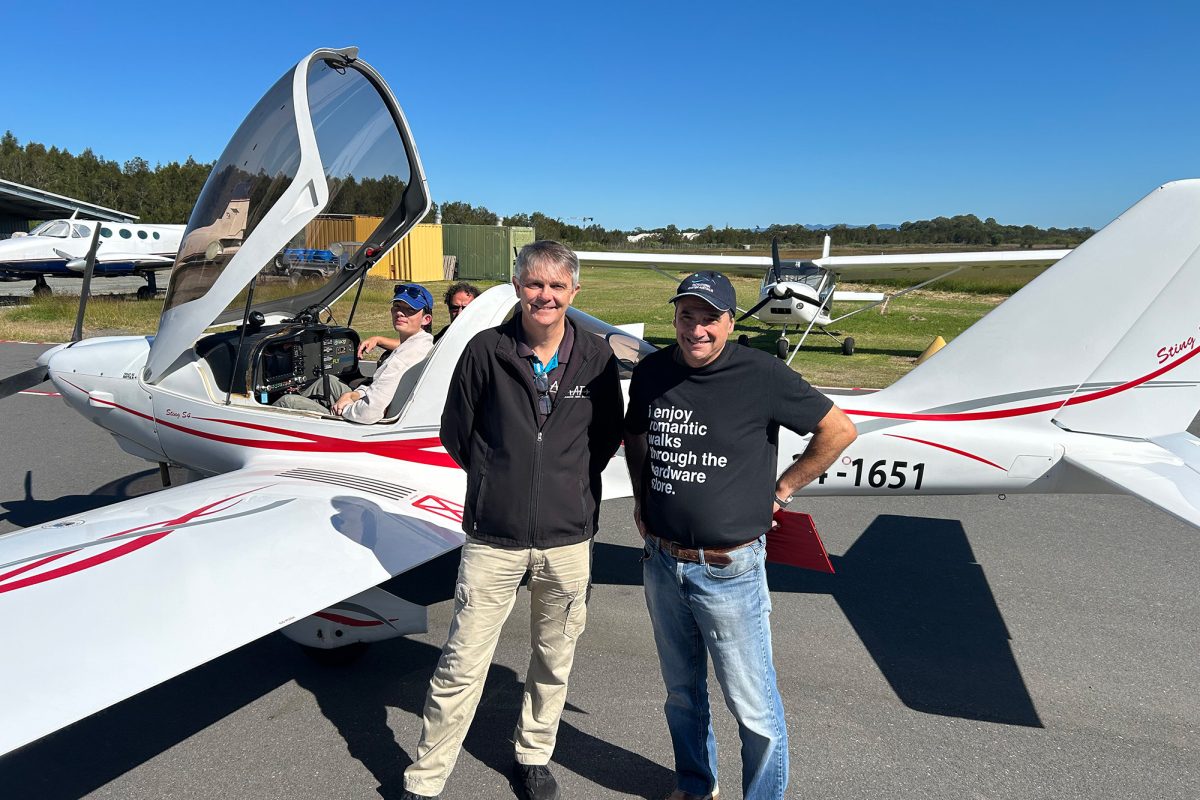IS THIS THE ULTIMATE LUXURY TOURER?
Recently we heard that a new version of the Topaz Ekolot Sport had just been released, so we jumped at the opportunity to put this aircraft to the test. We headed out at Riddells Creek with Rodney Birrell, who is the Australian importer of these planes and uses them in his own flight school. It isn’t every day that you get to see one in the flesh at your local airport, so we were excited to get to know a bit more about the Topaz.
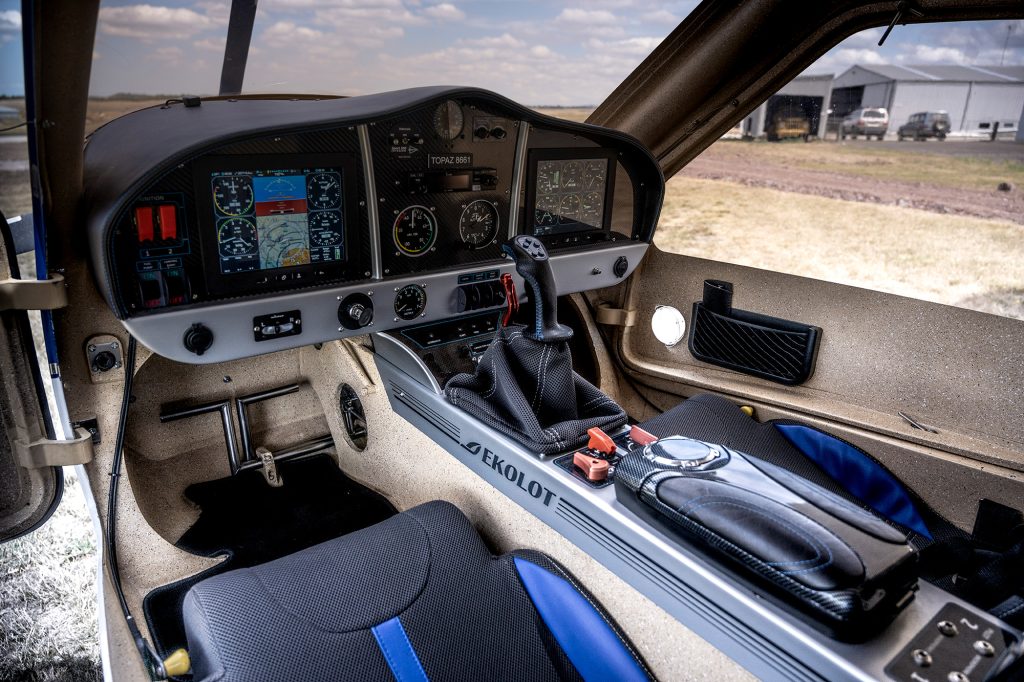
The first thing you’ll notice is the aircraft has a fairly long, strutless, high wing. Not quite as long as a glider, but when I found out it has a glide ratio of 17:1 I wasn’t surprised. Upon closer inspection, you will notice a distinct lack of rivets as the wing is made from carbon fibre. It quickly came to our attention that this aircraft has also been stripped of weight wherever possible without sacrificing any luxury.
After a quick tour around the plane, it became apparent that the Topaz isn’t your average aircraft. There are small details everywhere that demonstrate how meticulous the designers of this aircraft have been to reduce drag and weight. While on the ground, we popped open the cowling to take a look. This particular aircraft had the 100HP Rotax 912 ULS installed but there is an option for either an 80HP 912 or the fuel-injected version. My pick would be the one that is installed on this aircraft, as you get a bit of extra power without having to worry about the fuel injection start-up sequences, additional costs or the small amount of additional weight it adds. Under the hood, you will also notice that all of the hoses are colour coded and the fittings are all stainless steel to avoid corrosion along with a very well-sealed engine bay. Again, it is just these minor details that make a huge difference to the overall result.
It is worth noting that the Ekolot comes with the option to install a ballistic parachute. From chatting with GA pilots in the past, I was at first a bit sceptical of the additional maintenance and servicing requirements of having this included. However, after chatting with Rodney he explained that it only needs to be serviced and repacked every 7 years and the costs aren’t too bad at all considering the safety benefit that it provides (roughly $3-5K). I was pleased to hear this, as it is often perceived as a feature out of reach for many RAAus Pilots from both a cost and weight perspective, and it is something that I look forward to seeing more of in RAAus.
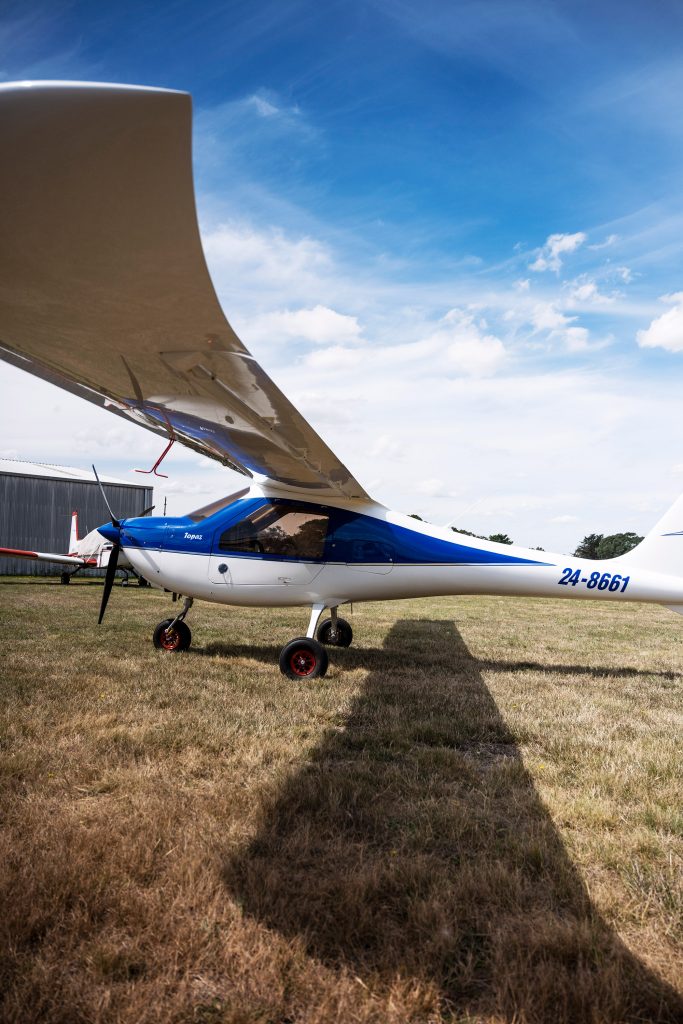
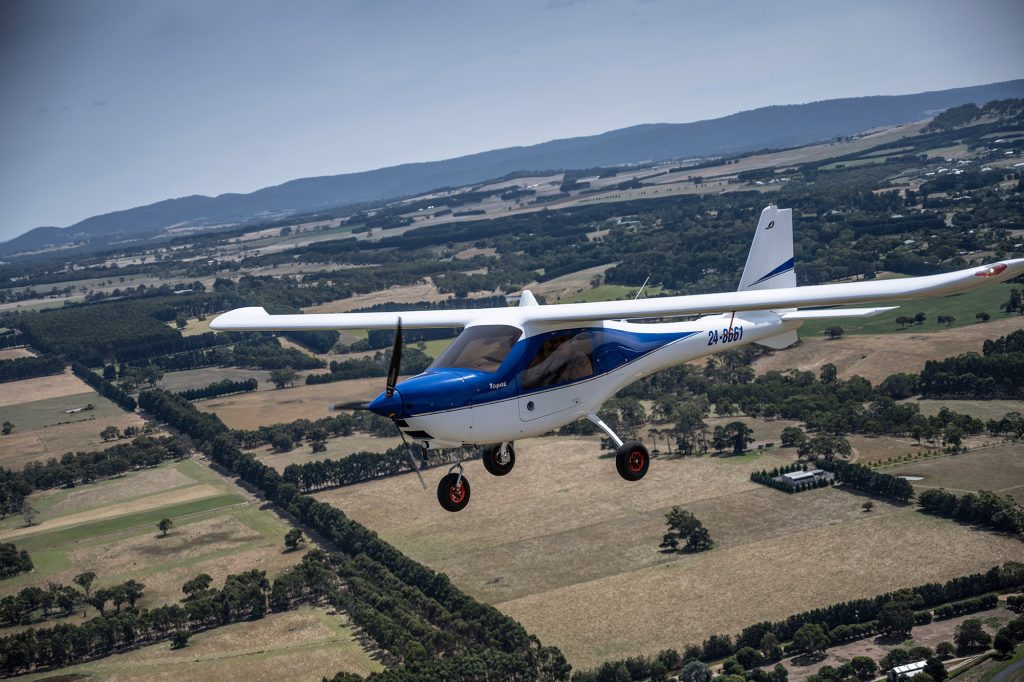
Just before I hopped into the cockpit, Rodney showed me the baggage compartment accessible from the outside. The doors don’t look like much, but once you open up the compartment you will see a massive cavity inside the plane with a 20kg limit per side. Usually, when I see nice baggage compartments like this, I do the maths of usable weight and soon end up disappointed because of the trade-off between storage, passenger weight or fuel and soon discover that touring is going to be just plain difficult. Due to this particular aircraft’s carbon composite build, the usable weight you have to play with is 310kg, which means this is one of the rare planes where you can have your cake and eat it too. To put that in perspective, that’s full fuel (100 litres), 2 x 80kg people and 40kg of luggage – plus room to spare!
Once inside the cockpit, even on the base model of the plane, you can expect the same kind of feel as a luxury sports car. The seats are super comfortable for anyone wanting to fly long distances. The natural flying position is very relaxed with the throttle control down by your side where your hand naturally rests near the door.
Although you can customise your dash when ordering, this particular variation had dual digital flight displays on each side with backup steam gauges in the middle which is a fantastic setup. I am used to flying with Garmin and Dynon flight instruments, so when I saw that this had the Kanardia Nesis III, I was a bit unsure.
As soon as the plane started up and Rodney gave me a run-through of how it worked, I was sold on the flight instruments straight away. I have always found many of the digital flight instruments hard to read at times compared with the ‘old fashioned’ steam gauges and the interface closer to an old ATM rather than a tabletstyle touch screen. This is the first time where I have seen a digital display light up and be a dream to use and without a large learning curve.
The Topaz also has a single centre-stick layout in the middle which I was eager to test out. In many aircraft with this layout, it is a bit awkward with the shared space in the middle tight, making it feel like you are on top of one another. I can happily say that in the Topaz you each have a wide armrest, so when you have your hand on the flight controls it feels just plain easy. The controls for flaps, trim and the radio transmit button are all located on top of the stick, I know that it sounds like a lot of buttons in one place but it feels very natural.
The hand brake for the plane sits vertically behind the stick almost like a motorbike brake. I have not previously flown with this layout but I now prefer it to all other layouts I have used. This way, you have command over all flight controls at the same time without needing to think about it, unlike toe brakes where you have to shuffle your feet around awkwardly for the hand brake in the middle of the cockpit.
After take-off, we saw a climb rate of 1,200 – 1,500 FPS with a really nice angle of attack allowing you to still have good visibility out the window. In flight, Rodney was showing me the aircraft’s performance when flying in formation with a second Topaz. Even though he was putting it into some awkward manoeuvres intentionally, you could tell how easy it was to handle. After we had exited the formation, he handed over the control and I got to have a bit of a play. I can’t emphasise how relaxed the flying position of the plane feels. With one hand sitting on your lap controlling the throttle and the other resting on the armrest it is a joy to fly and would be fantastic on long touring flights. All flight controls use pushrods rather than a pulley system so the handling is very direct and does exactly what you expect. After a few gentle turns, I then levelled out and trimmed the plane. Once fully trimmed, the plane needed almost no input to fly level and was very stable in flight.
Now for the downsides, of which there are very few. I am not a massive fan of the spring-loaded screws to remove the cowling and the door locking system.
Although a clean and tight fit, I would prefer it to have one central latch and lock rather than three located around the door frame. Now, I will admit that these two things are very nit-picky and are negligible at best.
When we had finished testing out the plane, I sat there trying to draw accurate comparisons to other RAAus aircraft but the aircraft that kept coming to mind were all GA aircraft. When I think about it, it does offer many of the features typical of a weight class above it and still manages to come in on the light side of things. It leaves me here wondering if there even is another RAAus touring aircraft that can come close to the set of features on offer for a similar price point? Not surprisingly, Rodney mentioned that a lot of enquiry comes for GA pilots looking for a high-end RA plane. Makes sense. In terms of price point, one of these will set you back $140,000 – $160,000 depending on whether you want the bells and whistles. Not everyone has that kind of budget. But if you’re criteria is weight load, distance, comfort and style, you’d be very pleased owning one of these.
Editor’s Note: Rod Birrell is a current RAAus Board Member.
